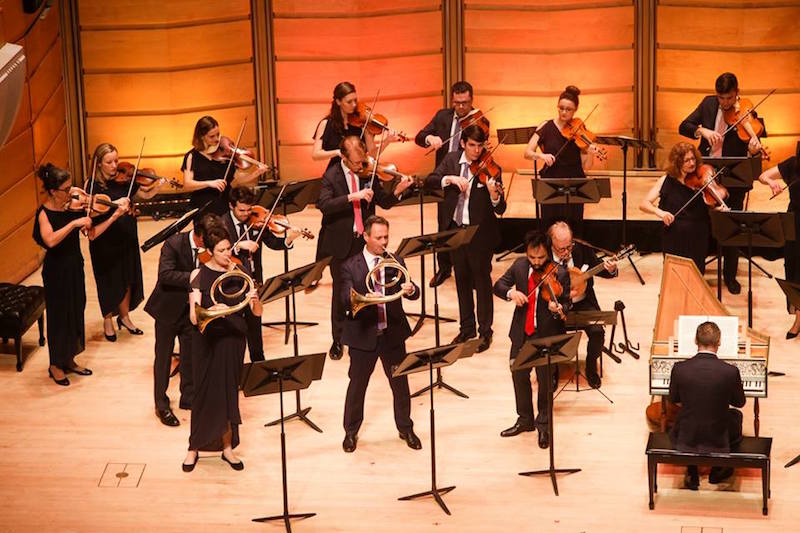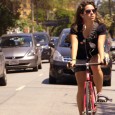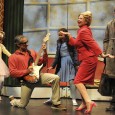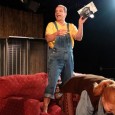The Brandenburg’s trademark joyfulness was in full flight from the beginning of their performance on opening night. The decorative lighting in shades of orange and rose gold provided an apt backdrop to Paul Dyer’s irrepressible enthusiasm and personal warmth, and brought cosiness to the elegant Recital Hall.
Playing on 18th century instruments, the ensemble embodies the novelty and excitement of hearing this music for the first time. When Dyer introduced his ‘homebred Australians’ in the first half of the program, he mused on the collective age of their musical instruments, suggesting that ‘millions of years of craftsmanship’ was on display, and throwing into relief the energy of their players. These would have been the rock stars of their era, and equally feted, which we are lucky enough to revisit, 300 years on, but with none of the calcification or high seriousness that sometimes deadens classical performances. Sammartini’s brief and bubbly Overture to the Opera Mamet made for an uplifting heart-starter; and it’s no surprise that it was Vivaldi who pioneered cadenzas to sound improvised, nor that sections of Telemann’s work are French dances.
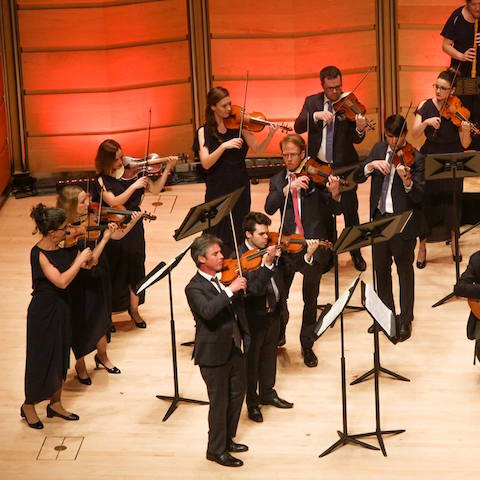 My interest in the concert was fueled by the opportunity to hear Telemann’s Concerto for Flute and Recorder in E minor. This piece was included in the Blazing Baroque program devised by Artistic Director Paul Dyer and his newly-appointed concertmaster, the violinist Shaun Lee-Chen, to celebrate their Robert Helpmann Award in 2015 for Best Chamber or Instrumental Ensemble Concert. Rather than feature an international soloist, as is more commonly the case, Dyer and Lee-Chen have decided to showcase their own best musicians, including the flautist, Melissa Farrow, and recorder player Mikaela Oberg in the rarely performed Telemann piece, as well as their oboists, Emma Black and Kirsten Barry, whose playing shone brilliantly in Vivaldi’s Concerto for several instruments in F Major, as well as Telemann’s Grand Concerto in D Major. But for me the flute and recorder concerto was the highlight, it’s moments of sadness tempered by the light tone of the instruments, the recorder’s piercing melancholy gently answered by the consolatory huskiness of the flute.
My interest in the concert was fueled by the opportunity to hear Telemann’s Concerto for Flute and Recorder in E minor. This piece was included in the Blazing Baroque program devised by Artistic Director Paul Dyer and his newly-appointed concertmaster, the violinist Shaun Lee-Chen, to celebrate their Robert Helpmann Award in 2015 for Best Chamber or Instrumental Ensemble Concert. Rather than feature an international soloist, as is more commonly the case, Dyer and Lee-Chen have decided to showcase their own best musicians, including the flautist, Melissa Farrow, and recorder player Mikaela Oberg in the rarely performed Telemann piece, as well as their oboists, Emma Black and Kirsten Barry, whose playing shone brilliantly in Vivaldi’s Concerto for several instruments in F Major, as well as Telemann’s Grand Concerto in D Major. But for me the flute and recorder concerto was the highlight, it’s moments of sadness tempered by the light tone of the instruments, the recorder’s piercing melancholy gently answered by the consolatory huskiness of the flute.
Another stand-out was Shaun Lee-Chen’s muscular interpretation of Vivaldi’s Concerto for Violin in D Major, which kept up the ebullient mood and gave an opportunity to display Lee-Chen’s virtuosity. An exquisitely controlled and attenuated pianissimo passage with the ensemble tip-toeing in the shadows proved he was not all bravado and brashness.
The brass section, and particularly the two Baroque Horn soloists, were magnificent in the second half of the program, although one of them seemed to be experiencing some trouble with her instrument. Nevertheless, the sheer joie de vivre of the performance was a reminder that the skill and practice entailed in the production of this fulsome, glorious sound is beyond imagining. I was unsure why the program was ended with a relatively obscure work by Johann Friedrich Fasch, and could at first see why—despite his initial popularity—Fasch has since been eclipsed by his contemporaries, Bach, Handel and Telemann. But I was won over by the third movement’s flamboyance, particularly the violinists’ butterfly effects punctuated by striking verve.
As Carrie Bradshaw might have said in Sex And The City, the Australian Brandenburg Orchestra has excellent throw-down.
The program from opening night on July 27 was recorded for the ABC Classic Music FM and will be broadcast on Thursday 11 August at 1 pm.
Sydney City Recital Hall, Angel Place
- Fri, 29 July, 7:00 PM
- Wed, 3 August, 7:00 PM
- Fri, 5 August, 7:00 PM
- Sat, 6 August, 2:00 PM
- Sat, 6 August, 7:00 PM
Melbourne Recital Centre
- Sat, 30 July, 7:00 PM
- Sun, 31 July, 5:00 PM
Queensland Performing Arts Centre
- Mon, 8 August, 7:30 PM

